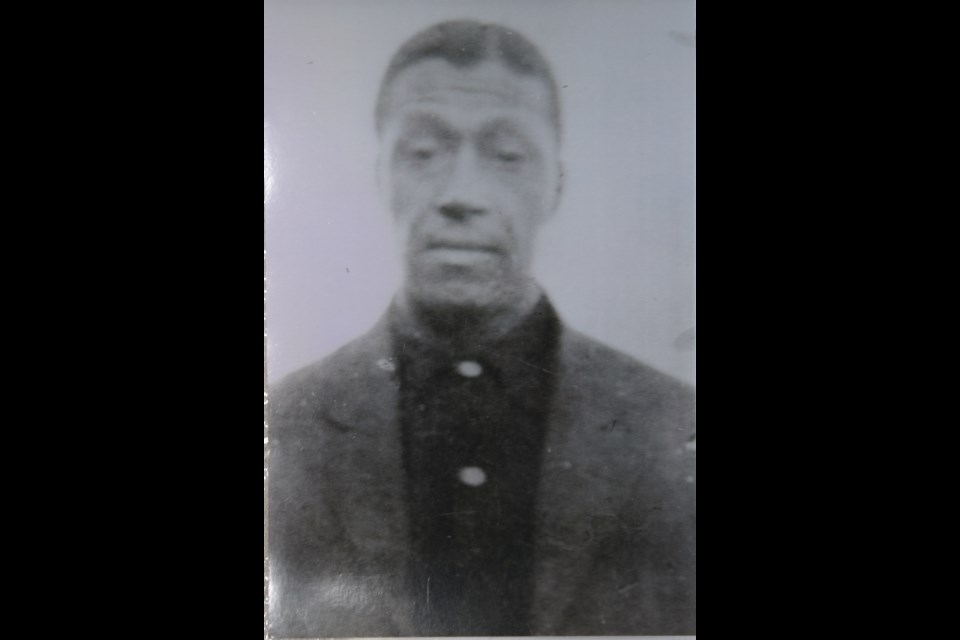BARRHEAD – Ron Smith says Canada and Alberta are in danger of losing the history of the first generation of Black settlers.
And Smith, with the help of his wife Patricia, is doing the best they can to document his family's history.
"We are into the second generation of Black history in Canada," he said. "And the problem is, for us, that we are losing the first generation history, the Blacks that came up from the United States and were the true pioneers."
Smith's grandfather, Edward Leonard Smith, was the last person buried at the Bethel Baptist Cemetery in 1948 before the province decommissioned the cemetery in 1950.
The cemetery, about 19 km west of Barrhead on Highway 18, is the final resting ground of more than a dozen residents of the black settlement at Campsie that existed from about 1909 to the 1940s.
Edward Leonard Smith was born in Hayward, Tennessee, and decided to come up to Canada, specifically to Alberta and Campsie, in the early 1900s, attracted by the promise of free land offered by the Canadian government in an attempt to populate the prairies. They crossed into Canada from Washington State and ended up in Alberta in 1907 or 1908.
Patricia said during the summer, Edward would work the land, applying for a 10-acre homestead in 1910, and work on the road construction crews that built many of the roads in the Campsie/Barrhead area and, in the winter, would go to Edmonton to work in the coal mines.
She added that because many of the original Campsie, one of the smallest, if not the smallest, Black settlements, residents were older, single men like Edward, and they would travel to one of the larger Black settlements in search of wives.
"Because in those days, interracial marriages were not something to be considered," Patricia said.
According to government census data, about 1,000 black settlers came to Alberta from 1905 to 1911. The majority of these settlers chose to settle in Amber Valley (near Athabasca), Breton (near Drayton Valley), Junkins (near Wildwood) or Eldon and Rosetown in Saskatchewan.
Out of those 1,000, it is estimated from census records that from 1906 to 1933, 36 homesteaders, or about 30 families, settled in Campsie.
Edward went to Amber Valley, where he met a young woman, Suzie Gough, whose family was originally from Oklahoma. They married in Edmonton in 1912, returning to Campsie, where they had seven children: William Courtney Robert, Gladys, Oretha, Alice Victoqia, Harvey Franklin (Ron's father), Iona Laura and Lenora. The couple also had another child, but it did not survive long after childbirth.
Baby Smith is also buried at the Bethel Baptist Cemetery.
Ron asked his aunt Gladys, who was 104 at the time, if she knew anything about her sister or brother, but unfortunately, she could not recall anything other than the fact that the child died during or shortly after childbirth.
Eventually, the property Ron's grandfather homesteaded in Campsie was passed down to his uncle, William Courteney Smith, who traded the property for a property in Valemount, B.C.
"That was the last of Smiths in Campsie," Ron said.
By the 1940s, the settlement was all but forgotten, with the original settlers passing away and their descendants moving away, mostly due to the lack of educational opportunities for their children.
Although the settlers would go on to found the Benton School, in the early 1920s, the school only went as high as grade school, after which many families would leave and move to Barrhead or other communities.
The settlers would also move to pursue other work opportunities or because they had married someone outside the community, more often than not, from one of the other Black settlements in Alberta.
Ron noted that his father, who would go on to marry Elizabeth Hayes from the Benton settlement, would end up leaving the area.
"My dad was basically blind because of an accident he had as a teenager," he said. "He was chopping for the cattle, and the chips went into his eyes."
Ron added that the Canadian National Institute for the Blind attempted to convince Harvey, who had an incredible singing voice, to sing professionally, but his mother refused to leave Benton, where the couple had settled.
However, he noted that as Campsie residents and their descendants dispersed across the country, they would leave a mark and, in some way, add to the original community's legacy.
He noted his uncle Bill would go on to coach athletics in Valemount, most notably boxing and went on to coach at the Olympics. He would also join Canada's Second World War effort, joining the Canadian Armed Forces in 1941, serving four years with a tank division in England, France, Belgium, and Holland.
For years, the cemetery was in disrepair, but in the late 1990s, the Barrhead Church of Jesus Christ of the Latter-Day Saints started a restoration project, cleaning up the grounds and replacing the old grave markers that had not withstood the passing of time with something more permanent. Regrettably, those are becoming weathered, and the church plans to replace them with what they hope will be the forever stone grave markers. They are currently fundraising and are roughly $3,000 short of their target.




